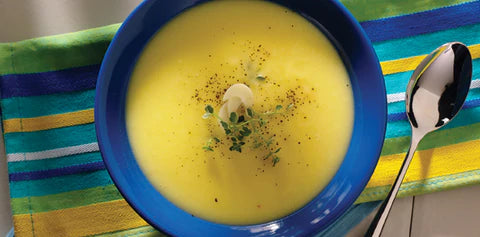What are Hearts of Palm and What do They Taste Like?
Hearts of palm are the inner core and growing bud of certain palm trees, most commonly the peach palm, coconut palm, and acai palm. They are harvested from the center of the palm tree's trunk and are valued for their tender texture and mild, slightly nutty flavor.
Hearts of palm are the newest rage in health food; you will find them everywhere, from on top of salads to turned into noodles and used as an alternative to regular pasta. Besides their pleasant mild taste, there are many health benefits to consuming hearts of palm, which is undoubtedly driving their rise to superfood stardom.
History of Hearts of Palm
Hearts of palm are a historical part of the diet of many indigenous and traditional people, from the deep Amazon forest to the island of Jamaica. There are actually several different trees that the heart of palm comes from, but they are all related and produce an almost exactly similar product. This product is a fibrous but fleshy heart that many local people consider almost like "tree meat." And, as we are about to see, that is a very accurate description.
Hearts of Palm Are High in Protein
Vegetarians often struggle to get enough protein in their diet, meaning heart of palm could be an absolute game-changer in the plant-based food movement. According to WebMD, heart of palm is a "rich source" of protein that contains all nine essential amino acids. These essential amino acids are important for building muscle and organ tissue and cannot be made by your body, so they need to be consumed in food. Very few vegetables contain all nine of these essential amino acids, so the heart of palm joins the rank of other superfoods like quinoa and buckwheat as a complete source of protein.
Hearts of Palm Are a Low-Calorie, High-Fiber Food
Experts agree that one of the ways to keep a healthy body weight is to consume fewer calories. One of the best ways to do that is to consume foods that make you feel full but are low in caloric value. According to Livestrong, hearts of palm contain only 41 calories per cup, yet that cup contains nearly 4 grams of plant fiber. This creates a "bulky" feeling in your stomach, so you don't want to eat as much, yet it only really gives you a small amount of the calories that pack on unwanted weight.
What Nutrients Do Hearts of Palm Contain?
Besides being high in protein and fiber and low in calories, hearts of palm are also packed with life-giving nutrients. According to WebMD, one serving of heart of palm contains over 62% of your recommended daily allowance of vitamin B6. It is also a good source of calcium, iron, potassium, zinc, niacin, riboflavin, and vitamin C. Vitamin B6 plays an integral part in heart, brain, and nervous system health and a key role in breaking down proteins. It is another compound often hard to obtain in a vegetarian diet, making heart of palm even more attractive as part of a plant-based diet.
Where Can I Find Hearts of Palm?
This underrated vegetable is found in major grocery stores. Most brands offer a soft version which is generally canned. Our Dulu brand is a Costa Rican jarred and pickled version with similar characteristics as when they are fresh. It has a light, hearty flavor with a pinch of brown sugar sweetness(Keto friendly). You may buy them at our store.
How To Prepare Hearts of Palm
Hearts of palm can be cooked right into pasta and soups or eaten straight out of the jar — try them wrapped in jam or cheese for a delicious appetizer.
Browse through our diverse bank of recipes:








